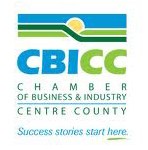State College, PA – Large growth companies have been the top performing asset class for the last several years starting back in 2014. They have been better than small and value companies by comparison in six of the last seven years.
This environment does create pause for the academic minded investor knowing the historic reality of small and value companies’ outperformance of large growth companies. It is always a mental challenge when we see one asset class shine for several years, especially when the majority of the 20+ other asset classes are waning. It is not uncommon in a well-diversified, global-based, portfolio to see some asset classes down while others are up, (dissimilar price movement, umbrellas vs suntan lotion) that’s diversification being applied. We know this is nothing new and has happened many times in the past historically where one asset class outpaces the other for a period of time. We do have to remind ourselves that we are getting all the returns of that asset class but often rolling the profits into asset classes that are down in order to take advantage and rebalance. This would be 1 of 3 of the primary tenants of investing: own equities (stock), diversify (umbrellas, suntan lotion), and rebalance (asset classes back to a target % of ownership).
As humans we have a very short-term mindset and memory, especially when it comes to investing. Times like these require discipline to take the profits from the one strong asset class and spread it out over the other areas. The visual effect looks like a portfolio may not be gaining ground based on the current account balance, but, in fact, you’re gaining shares of ownership in the majority of the other 20+ asset classes.
I was recently discussing this concept of rebalancing with a client whose vocation is farming. He made this comment, “So I had 100 pigs before the market went down, now I still have 100 pigs, but they’re just leaner right now.” Yes, you still have the 100 pigs they are just skinnier in the current environment. But….because a few of the pigs are fat we are going to send a couple of them to the market and trade for several skinny pigs to add to the fold. You see, we are looking at it from a long-term perspective, recognizing that different seasons bring different conditions for the pigs.
Currently the only pigs that are really fat are the large growth companies. Many other areas of the market, especially US small/value companies along with emerging and developed international markets, are the skinny pigs right now (COVID crunch). However, this is also a cautionary tale. When one area of the market is predominantly up, the tendency is to grab more fat pigs rather than looking to the skinny pigs and the long-term value breakdown. This is why discipline is so important with continued rebalancing, otherwise we get too heavily weighted in one area.
A great example is looking at the Standard & Poors 500 index which is made up of 500 US large companies. Currently five US large tech companies: Google, Facebook, Apple, Microsoft, and Amazon make up 23%. Majority of the portfolios we analyze are already weighted heavy to the large growth side. A compounding factor is how heavily the large index is weighted to just a few companies. It’s a reminder, this is how many people lost huge amounts of wealth in the tech bubble of the early 2000s. We are seeing that set up all over again, in the same area ironically. A well-diversified portfolio is rarely sexy so to speak, but is sustainably producing, long-term financial security, historically.
Academically we must do what is counterintuitive to our human nature, currently run toward the pain (buying small and value currently) and run away from the pleasure (selling US large growth companies).




 Clarity Coaching Tips
Clarity Coaching Tips Common Sense Videos
Common Sense Videos It’s Your Money
It’s Your Money
